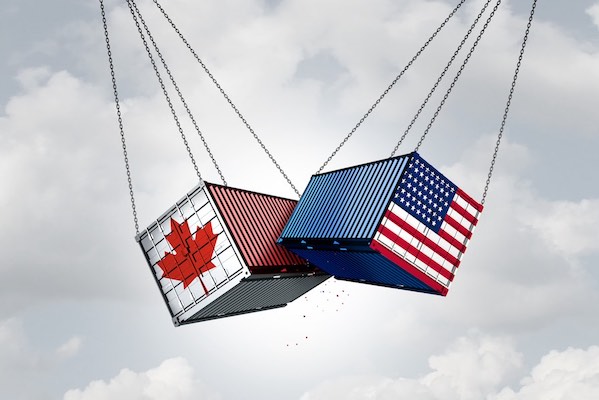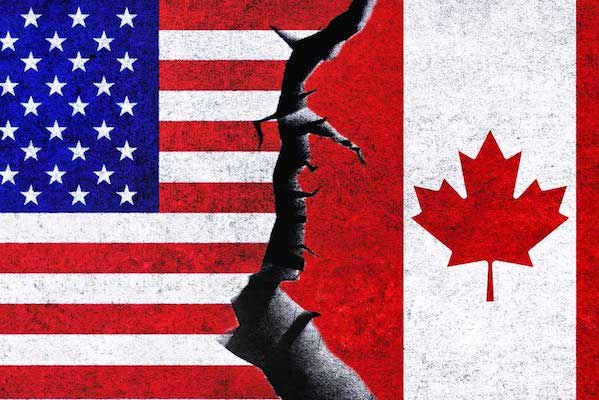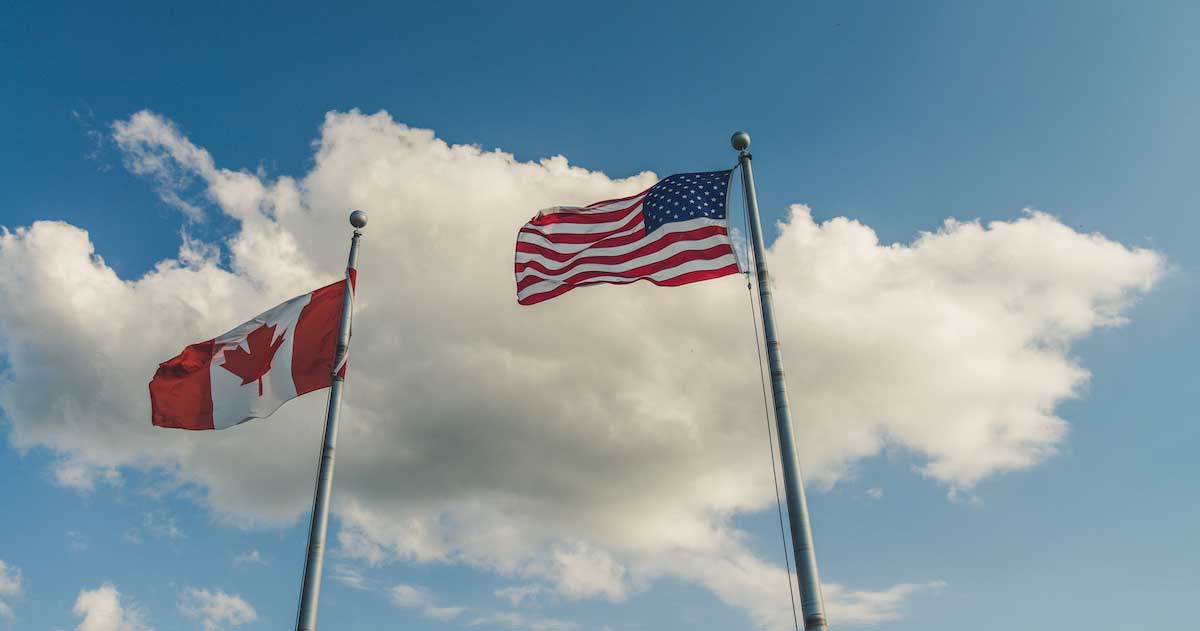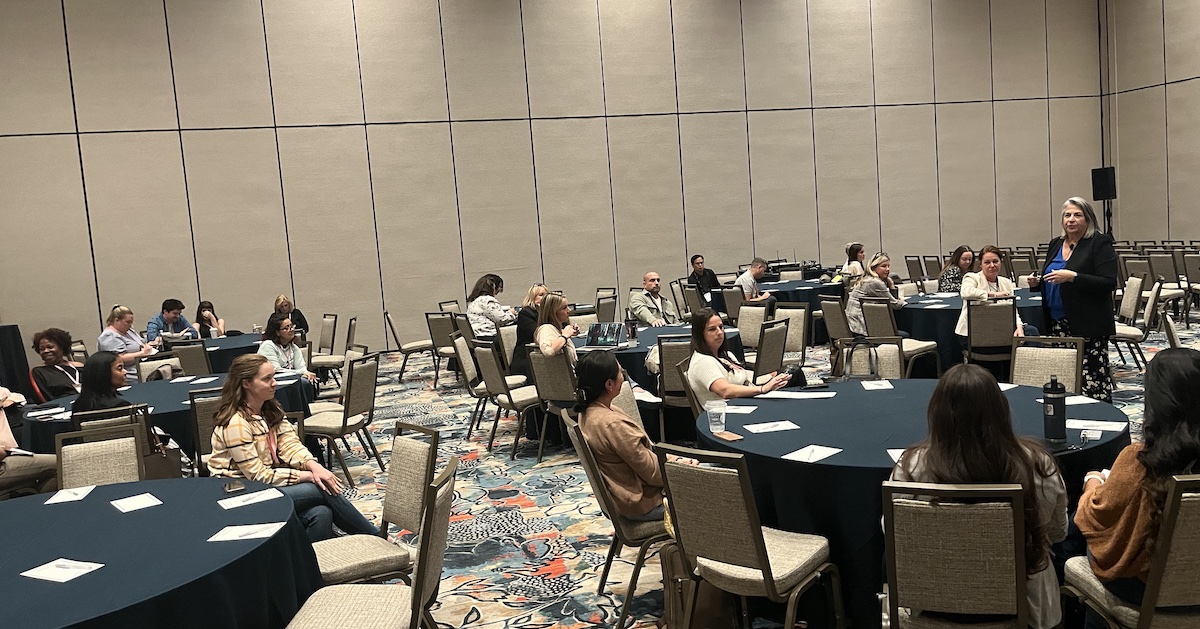The Canada-U.S. relationship is not in a good place, and signs are it could get worse.
The U.S. ambassador to Canada, Peter Hoekstra, told a September meeting of the Halifax Chamber of Commerce, “I’m disappointed that I came to Canada—a Canada that it is very, very difficult to find Canadians who are passionate about the American-Canadian relationship.” A week later, the ambassador told the Global Business Forum meeting in Banff, “My direction from the president is very, very clear: prosperity, safety and security. And for those Canadians who want to talk about growing business opportunities, securing their borders and those types of things, the embassy is open to do business with you. If you wanted talk about the ‘51st state,’ I don’t have time to do that.”
The ambassador then added that the administration might have to “take a look at” customs preclearance at Canadian airports for U.S.-bound travelers, given the drop in cross-border visitors. Preclearance, which has been offered since 1952, enables travelers to undergo customs inspection before their departing flights. Since this is on Canadian soil, problems are resolved without the expense of travel or risk of U.S. Immigration and Customs Enforcement (ICE) detention, which is a serious consideration in Canada since 149 Canadians have been detained by ICE in the first seven months of 2025.
The current tensions are not a dislike of America or Americans, but a pushback against administration comments and policy threats to Canadian sovereignty—suggesting Canada should be the “51st state.” To understand Canadian strategy, look to hockey. In the spring, Canada’s new prime minister, Mark Carney, rallied Canadians with an “elbows up” call. Now he seems to have embraced a move called “ragging the puck,” which is basically holding control of the puck until the clock runs out. Think filibuster on ice.
As previously reported, the U.S. Travel Association (USTA) predicted a potential 10%, then a 20% decline in Canadian visitors for 2025. By the end of August, the USTA reported the decline had reached 22%. And even that may be optimistic. In the first eight months of 2025, Statistics Canada’s figures for daily land and air border crossings show a 28% drop in year-over-year Canadian visits to the U.S. In real people terms, that’s 6,021,340 Canadians who didn’t travel to the U.S. compared to 2024. Averaging this out means the drop in Canadian travelers to the U.S. could hit 9,032,010, a 45% loss.

This drop in business is having a huge impact on border states. For example, organizers of a Vermont craft beer festival expected to sell 700 tickets to Canadians in 2025. They sold 50. While Canadians have cut travel to the U.S., their foreign travel overall has risen 6.6%. They’re traveling, just not to the U.S. This cut in visitation could impact many of the small suppliers to the events sector.
SAP Concur suggests, however, that Canadian business travel to the U.S. during the first half of the year has remained stable compared with last year’s levels. SAP data showed the U.S. accounted for 79% of corporate travel from Canada. Brian Veloso, managing director at SAP Concur Canada, told the Toronto Star, “Despite the political tension and the economic uncertainties right now between Canada and the U.S., the U.S. remains an absolutely critical partner with the majority of Canadian businesses.” And Canada was the No. 1 international destination for corporate travel from the U.S.
While seemingly positive data, there is more to the numbers.
In September, Minto Schneider, board chair of Meetings Mean Business Canada, attended a meeting of convention centers and DMOs from across Canada.
“They are commenting that business is picking up for future years—2026, 2027 to 2030. This had been slow coming since the COVID shut down, but now looking better,” she says. “Corporate business is short term. Some commented that businesses that are Canadian based kept meetings, which may have gone south, in Canada. Apparently, some business wanted to move to Canada, but the penalties for cancellation were so huge, they stayed where booked.”
Cancellation penalties may not keep groups from moving in future years.
“The biggest issue we were concerned about was the attendance at conferences in Canada with the budget cuts for the federal government in the U.S.,” Schneider says. “This affected many people who would have seen their budgets for travel cut and, therefore, had to cancel plans to attend conferences in Canada. There was some of this, but DMOs stepped up to help market to potential attendees to build registration.”
Renée-Frédérique Aubert, assistant director, marketing for Québec City Business Destination, fortifies Schneider’s observation.
“We’ve seen signs of this trend. At the Québec City Convention Centre, we’ve received 15 inquiries so far” mostly for 2026 and some for 2027 “from Canadian organizations, primarily in the corporate sector, looking to relocate events that were initially planned for the U.S.,” she says.

Caroline Lepage, president and CEO of the Québec City Convention Centre, says, “There’s clearly growing interest in Canada from international event organizers who are rethinking their presence in the U.S. We’re also seeing a rise in Canadian events choosing to stay in the country, and Québec City is benefiting from that.”
Stephanie Seguin, vice president, business & major events for Ottawa Tourism, says, “Ottawa’s situation closely mirrors that of Québec City. We are seeing clients from the EU, UK and U.S. considering Canada’s capital as a potential destination for their future events. We too are hovering around the 15-enquiry mark.”
The Palais des congrès de Montréal is also benefiting from the border tensions. Marie-Claude Lizée, director of marketing and communications for the venue, says, “We have received several inquiries from U.S. groups, mainly for events in 2026. However, since our short-term space availability is limited, only one of these inquiries has materialized so far [for a group relocating]. In the longer term, the outlook is very positive with 29 U.S. conventions already confirmed at the Palais through 2033.”
Washington, D.C., is among the destinations hurt by policy shifts and cancellations.
Washington, D.C., has lost nine confirmed meetings with 13,422 attendees and was removed from consideration by 43 other meetings with 32,654 projected attendees. This represents a loss of 90,000 room nights and $77 million in estimated economic impact.
“Many of these losses are attributed to a loss of government funding, job loss and economic uncertainty (for instance: losses tied to the education sector because of funding cuts at the Department of Education),” says Susan O’Keefe, senior manager, marketing and communications for Destination DC. “To put the numbers in perspective: since Oct. 1, our convention sales team has booked more than 995,000 room nights into the future. Losses tied to political concerns represent just 2% of total room nights generated, so the overwhelming trend is still positive.”
Going forward, O’Keefe says, “Washington’s meetings calendar remains strong, with a healthy mix of citywide conventions and in-house meetings. While there have been some cancellations, they do create limited opportunities for groups with short-term needs to access space and dates that might not have been available otherwise. For planners, this means D.C. is open to conversations around last-minute bookings, particularly for groups looking to relocate or pivot quickly.”
Going forward, domestic groups will have to consider the impact of federal government cuts on registrations, travel and sponsorships. International groups have those considerations as well as the probable loss of Canadian and foreign attendees, sponsors and exhibitors.
For the foreseeable future, the world’s longest land border between two countries will be a greater stumbling block to the business events sector than Canadian and American groups have been accustomed to.







